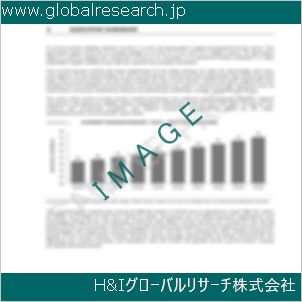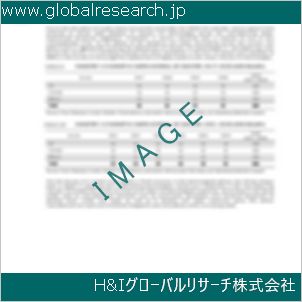Table of Contents
1 Industry Overview of Copper Oxide
1.1 Definition and Specifications of Copper Oxide
1.1.1 Definition of Copper Oxide
1.1.2 Specifications of Copper Oxide
1.2 Classification of Copper Oxide
1.3 Applications of Copper Oxide
1.3.1 Nuclear Application
1.3.2 Non-Nuclear Application
1.4 Industry Chain Structure of Copper Oxide
1.5 Industry Overview and Major Regions Status of Copper Oxide
1.5.1 Industry Overview of Copper Oxide
1.5.2 Global Major Regions Status of Copper Oxide
1.6 Industry Policy Analysis of Copper Oxide
1.7 Industry News Analysis of Copper Oxide
2 Manufacturing Cost Structure Analysis of Copper Oxide
2.1 Raw Material Suppliers and Price Analysis of Copper Oxide
2.2 Equipment Suppliers and Price Analysis of Copper Oxide
2.3 Labor Cost Analysis of Copper Oxide
2.4 Other Costs Analysis of Copper Oxide
2.5 Manufacturing Cost Structure Analysis of Copper Oxide
2.6 Manufacturing Process Analysis of Copper Oxide
3 Technical Data and Manufacturing Plants Analysis of Copper Oxide
3.1 Capacity and Commercial Production Date of Global Copper Oxide Major Manufacturers in 2023
3.2 Manufacturing Plants Distribution of Global Copper Oxide Major Manufacturers in 2023
3.3 R&D Status and Technology Source of Global Copper Oxide Major Manufacturers in 2023
3.4 Raw Materials Sources Analysis of Global Copper Oxide Major Manufacturers in 2023
4 Capacity, Production and Revenue Analysis of Copper Oxide by Regions, Types and Manufacturers
4.1 Global Capacity, Production and Revenue of Copper Oxide by Regions 2019-2024
4.2 Global and Major Regions Capacity, Production, Revenue and Growth Rate of Copper Oxide 2019-2024
4.3 Global Capacity, Production and Revenue of Copper Oxide by Types 2019-2024
4.4 Global Capacity, Production and Revenue of Copper Oxide by Manufacturers 2019-2024
5 Price, Cost, Gross and Gross Margin Analysis of Copper Oxide by Regions, Types and Manufacturers
5.1 Price, Cost, Gross and Gross Margin Analysis of Copper Oxide by Regions 2019-2024
5.2 Price, Cost, Gross and Gross Margin Analysis of Copper Oxide by Types 2019-2024
5.3 Price, Cost, Gross and Gross Margin Analysis of Copper Oxide by Manufacturers 2019-2024
6 Consumption Volume, Consumption Value and Sale Price Analysis of Copper Oxide by Regions, Types and Applications
6.1 Global Consumption Volume and Consumption Value of Copper Oxide by Regions 2019-2024
6.2 Global and Major Regions Consumption Volume, Consumption Value and Growth Rate of Copper Oxide 2019-2024
6.3 Global Consumption Volume and Consumption Value of Copper Oxide by Types 2019-2024
6.4 Global Consumption Volume and Consumption Value of Copper Oxide by Applications 2019-2024
6.5 Sale Price of Copper Oxide by Regions 2019-2024
6.6 Sale Price of Copper Oxide by Types 2019-2024
6.7 Sale Price of Copper Oxide by Applications 2019-2024
6.8 Market Share Analysis of Copper Oxide by Different Sale Price Levels
7 Supply, Import, Export and Consumption Analysis of Copper Oxide
7.1 Supply, Consumption and Gap of Copper Oxide 2019-2024
7.2 Global Capacity, Production, Price, Cost, Revenue, Supply, Import, Export and Consumption of Copper Oxide 2019-2024
7.3 USA Capacity, Production, Price, Cost, Revenue, Supply, Import, Export and Consumption of Copper Oxide 2019-2024
7.4 EU Capacity, Production, Price, Cost, Revenue, Supply, Import, Export and Consumption of Copper Oxide 2019-2024
7.5 China Capacity, Production, Price, Cost, Revenue, Supply, Import, Export and Consumption of Copper Oxide 2019-2024
7.6 Japan Capacity, Production, Price, Cost, Revenue, Supply, Import, Export and Consumption of Copper Oxide 2019-2024
8 Major Manufacturers Analysis of Copper Oxide
8.1 Manufacturer One
8.1.1 Company Profile
8.1.2 Product Picture and Specifications
8.1.2.1 Type I
8.1.2.2 Type II
8.1.2.3 Type III
8.1.3 Capacity, Production, Price, Cost, Gross and Revenue
8.1.4 Contact Information
8.2 Manufacturer Two
8.2.1 Company Profile
8.2.2 Product Picture and Specifications
8.2.2.1 Type I
8.2.2.2 Type II
8.2.2.3 Type III
8.2.3 Capacity, Production, Price, Cost, Gross and Revenue
8.2.4 Contact Information
8.3 Manufacturer Three
8.3.1 Company Profile
8.3.2 Product Picture and Specifications
8.3.2.1 Type I
8.3.2.2 Type II
8.3.2.3 Type III
8.3.3 Capacity, Production, Price, Cost, Gross and Revenue
8.3.4 Contact Information
8.4 Manufacturer Four
8.4.1 Company Profile
8.4.2 Product Picture and Specifications
8.4.2.1 Type I
8.4.2.2 Type II
8.4.2.3 Type III
8.4.3 Capacity, Production, Price, Cost, Gross and Revenue
8.4.4 Contact Information
8.5 Manufacturer Five
8.5.1 Company Profile
8.5.2 Product Picture and Specifications
8.5.2.1 Type I
8.5.2.2 Type II
8.5.2.3 Type III
8.5.3 Capacity, Production, Price, Cost, Gross and Revenue
8.5.4 Contact Information
…
9 Marketing Trader or Distributor Analysis of Copper Oxide
9.1 Marketing Channels Status of Copper Oxide
9.2 Traders or Distributors with Contact Information of Copper Oxide by Regions
9.3 Ex-work Price, Channel Price and End Buyer Price Analysis of Copper Oxide
9.4 Regional Import, Export and Trade Analysis of Copper Oxide
10 Industry Chain Analysis of Copper Oxide
10.1 Upstream Major Raw Materials Suppliers Analysis of Copper Oxide
10.1.1 Major Raw Materials Suppliers with Contact Information Analysis of Copper Oxide
10.1.2 Major Raw Materials Suppliers with Supply Volume Analysis of Copper Oxide by Regions
10.2 Upstream Major Equipment Suppliers Analysis of Copper Oxide
10.2.1 Major Equipment Suppliers with Contact Information Analysis of Copper Oxide
10.2.2 Major Equipment Suppliers with Product Pictures Analysis of Copper Oxide by Regions
10.3 Downstream Major Consumers Analysis of Copper Oxide
10.3.1 Major Consumers with Contact Information Analysis of Copper Oxide
10.3.2 Major Consumers with Consumption Volume Analysis of Copper Oxide by Regions
10.4 Supply Chain Relationship Analysis of Copper Oxide
11 Development Trend of Analysis of Copper Oxide
11.1 Capacity, Production and Revenue Forecast of Copper Oxide by Regions and Types
11.1.1 Global Capacity, Production and Revenue of Copper Oxide by Regions 2024-2029
11.1.2 Global and Major Regions Capacity, Production, Revenue and Growth Rate of Copper Oxide 2024-2029
11.1.3 Global Capacity, Production and Revenue of Copper Oxide by Types 2024-2029
11.2 Consumption Volume and Consumption Value Forecast of Copper Oxide by Regions, Types and Applications
11.2.1 Global Consumption Volume and Consumption Value of Copper Oxide by Regions 2024-2029
11.2.2 Global and Major Regions Consumption Volume, Consumption Value and Growth Rate of Copper Oxide 2024-2029
11.2.3 Global Consumption Volume and Consumption Value of Copper Oxide by Types 2024-2029
11.2.4 Global Consumption Volume and Consumption Value of Copper Oxide by Applications 2024-2029
11.3 Supply, Import, Export and Consumption Forecast of Copper Oxide
11.3.1 Supply, Consumption and Gap of Copper Oxide 2024-2029
11.3.2 Global Capacity, Production, Price, Cost, Revenue, Supply, Import, Export and Consumption of Copper Oxide 2024-2029
11.3.3 USA Capacity, Production, Price, Cost, Revenue, Supply, Import, Export and Consumption of Copper Oxide 2024-2029
11.3.4 EU Capacity, Production, Price, Cost, Revenue, Supply, Import, Export and Consumption of Copper Oxide 2024-2029
11.3.5 China Capacity, Production, Price, Cost, Revenue, Supply, Import, Export and Consumption of Copper Oxide 2024-2029
11.3.6 Japan Capacity, Production, Price, Cost, Revenue, Supply, Import, Export and Consumption of Copper Oxide 2024-2029
12 New Project Investment Feasibility Analysis of Copper Oxide
12.1 New Project SWOT Analysis of Copper Oxide
12.2 New Project Investment Feasibility Analysis of Copper Oxide
13 Conclusion of the Global Copper Oxide (CAS 1317-38-0) Industry 2024 Market Research Report
| ※参考情報 酸化銅(Copper Oxide、化学式:CuO)は、銅と酸素からなる無機化合物で、主に二種類の形態、すなわち一酸化銅(Cu₂O)と二酸化銅(CuO)として存在します。これらはそれぞれ異なる特性を持ち、さまざまな用途に使用されています。酸化銅は、金属と酸素の結合によって形成される化合物であり、典型的には黒色の粉末または結晶として知られており、酸化銅(II)の形態は特に二酸化銅に該当します。 酸化銅の特徴として、まずその化学的性質があります。二酸化銅は不溶性であり、強い酸化剤として機能します。また、高い熱安定性を持ち、通常の温度で分解することはありません。さらに、耐酸性と耐アルカリ性を兼ね備えており、さまざまな化学環境下で利用可能です。他の金属酸化物同様に、電子の移動が容易であり、半導体特性を示すこともあります。 酸化銅は、その形態によって多様な用途に利用されています。一酸化銅(Cu₂O)は主に触媒や電子材料、太陽電池の材料として用いられることが多いです。これはその特異な電子特性、すなわち電気的伝導性が高いことによるものです。一方、二酸化銅(CuO)は、主に顔料や化学反応における触媒、さらには電池の材料として幅広く使用されています。 具体的な用途の一つは、セラミックスの製造です。酸化銅はセラミックスの色材として用いられることが多く、高温で焼成された際に得られる深い緑色は魅力的な装飾効果を与えます。また、酸化銅は合金の製造にも使用される場合があり、特に銅を強化するために添加されることがあります。電気伝導性を向上させることで、電気回路の特性を改善する役割も果たします。 医療分野でも酸化銅は注目されており、特に抗菌効果があることから、医療機器や感染防止のためのコーティング材料として利用されることがあります。抗菌性は、酸化銅が細菌の細胞膜を破壊する能力に起因するため、消毒や清浄作用が期待されます。 さらに、環境技術においても酸化銅は重要な役割を担っています。例えば、水処理プロセスにおいて、酸化銅は有毒物質の分解や重金属の捕集に利用されます。また、土壌浄化技術においても、酸化銅は土壌中の有害物質を吸着・除去するための素材として使用されます。このように、酸化銅は持続可能な環境管理においてもその特性を活かされています。 酸化銅の製造方法も多岐にわたります。一般的な製造方法には、銅製品を加熱酸化する方法や、湿式法による化学合成が含まれます。加熱酸化法では、銅粉や銅鉱石を高温で加熱し、酸素と反応させることで酸化銅が得られます。湿式法では、銅を含む塩溶液を処理することで、化学反応を通じて酸化銅を生成します。このようにして得られる酸化銅は、純度や結晶性が異なる場合があり、用途に応じて選定されます。 なお、酸化銅の取り扱いには注意が必要です。特に粉塵を吸引することによる健康被害や、皮膚への接触によるアレルギー反応が報告されており、適切な保護具を着用する必要があります。また、酸化銅は水に対して不溶性であるため、環境への影響を考慮した適切な廃棄方法が求められます。 最後に、酸化銅はその特性を生かして今後もさまざまな分野での応用が期待される素材です。ナノテクノロジーや新材料研究の進展に伴い、新たな利用方法や性能改善が進むことでより多くの産業への貢献が見込まれています。これからの酸化銅の研究開発は、環境への配慮を持ちながら、幅広い分野での革新的な解決策を提供する可能性を秘めています。 |
❖ 免責事項 ❖
http://www.globalresearch.jp/disclaimer












